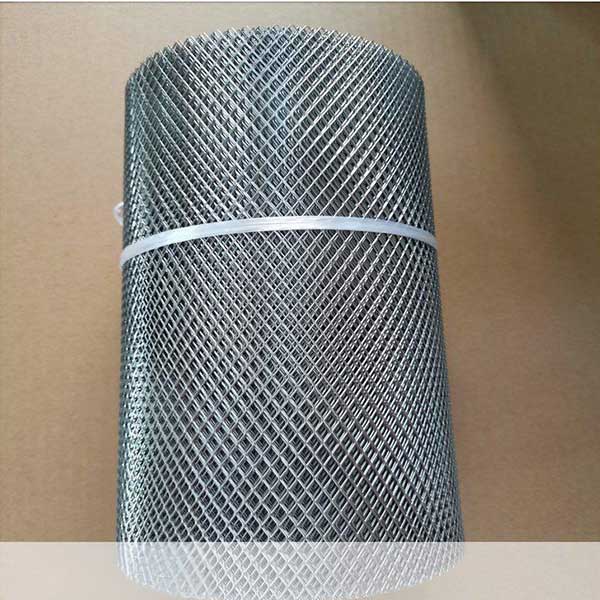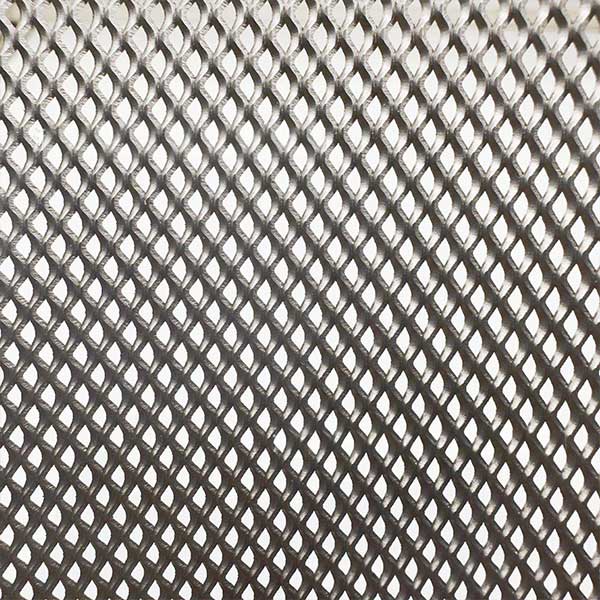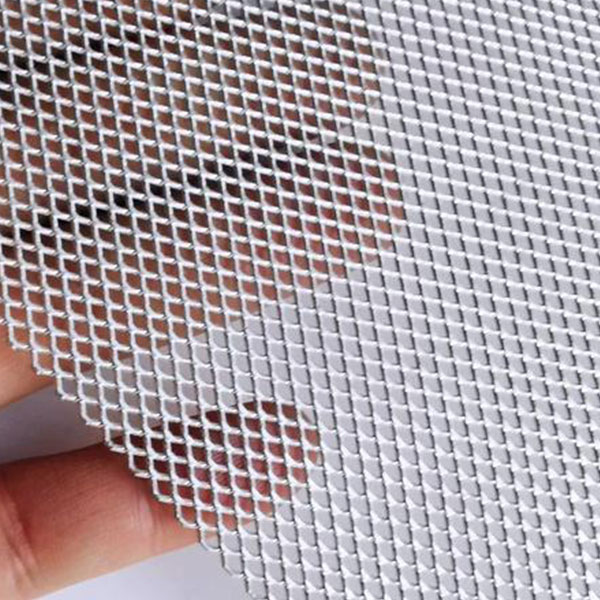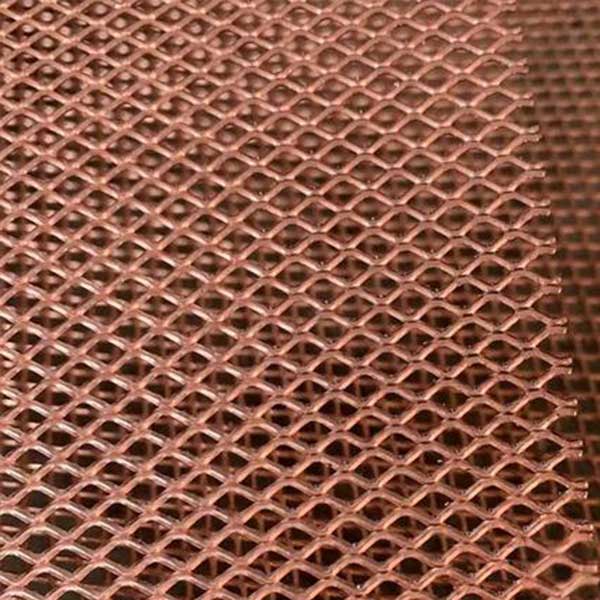Wire Mesh Manufacturer Introduces Expanded Metal Mesh Specifications
Expanded metal mesh is a coil of thin metal that has been precisely slit and stretched to form a uniform, mesh-like material with a regular pattern of openings (often diamond-shaped). Unlike woven wire mesh, expanded metal is made from a single piece of metal that is never completely cut—this creates a one-piece mesh with no welded joints, resulting in excellent conductivity and structural integrity.
Key Expanded Metal Specifications & Definitions
When reviewing expanded metal mesh specifications, you’ll encounter a variety of technical terms and acronyms. Understanding these definitions is important for engineers to correctly specify the mesh and ensure it meets the application’s requirements. If you’ve ever wondered about SWD’s meaning or LWD’s meaning on a spec sheet, here we clarify those and other key expanded metal terms:
LWD
SWD
Strand Width (SW)
Thickness (Gauge)
Material Weight (Weight per Area)
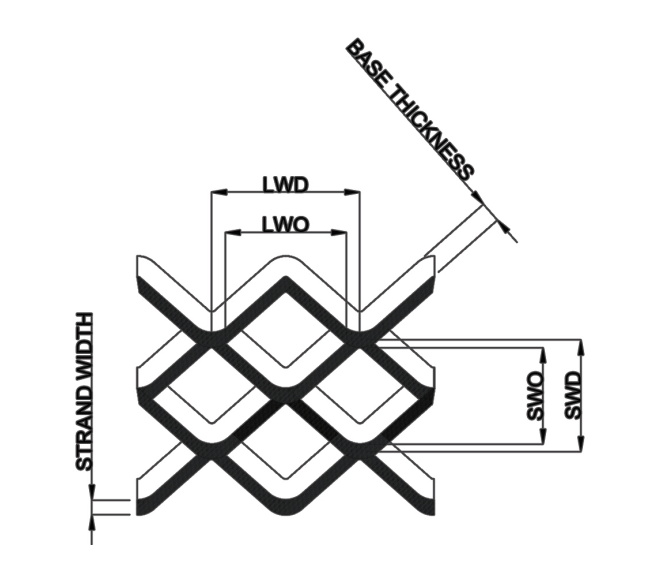
. LWD (Long Way of the Diamond)
LWD stands for “long way of the diamond,” referring to the length of the longer diagonal of each diamond opening. It is measured from the center of one node to the center of the next node along the long axis of the diamond. LWD is typically larger than SWD, since it’s the longer dimension of the diamond shape.
A larger LWD yields greater overall open area and can improve airflow or visibility through the mesh. But it can also make the mesh less flexible and more rigid along the long axis. Conversely, a smaller LWD (closer in size to the SWD) results in a more uniform, square-like opening and can enhance the mesh’s strength because the strands are closer together.
. SWD (Short Way of the Diamond)
SWD stands for “short way of the diamond.” This refers to the length of the shorter diagonal of each diamond-shaped opening, typically measured from the center of one node (intersection of strands) to the center of the adjacent node along the short axis of the diamond.
In simpler terms, it’s the short dimension of each opening including the material between nodes. A smaller SWD generally means a tighter mesh (more diamonds per area), which can increase the mesh’s flexibility in one direction and create a finer filtration screen. A larger SWD means the diamonds are elongated in the short direction, usually making the mesh slightly more rigid along that axis and reducing the number of openings per area. The SWD is critical for applications that need a certain mesh density or are concerned with how the mesh will flex or drape in the direction of the short diagonal.
Together, SWD and LWD define the basic geometry of the expanded mesh openings and are usually given in inches or millimeters. For example, an expanded metal spec might list SWD = 0.25″ and LWD = 0.50″ for a certain mesh pattern.
. Strand Width (SW)
Strand width is the width of the metal strips that make up the sides of each diamond opening (the material between the openings). In the expansion process, strand width corresponds to how much metal remains after slitting and stretching. A wider strand width means each “ligament” of metal is broader. This has a direct effect on strength and open area: wider strands yield a stronger, more rigid mesh (since there’s more metal mass in the pattern) but they reduce the open area percentage (because thicker strands take up more space, leaving smaller gaps). Narrow strands increase the open area and improve airflow or transparency, but the mesh will be less robust and may be more prone to deformation.
Engineers will choose a strand width based on the needed balance between strength and open area. For example, a heavy load-bearing platform might use an expanded metal with thick, wide strands for maximum strength, whereas a fine filter or shielding mesh uses very thin strands to maximize open space. (Note: Strand width is different from strand thickness – width is the measurement in the plane of the coil, while thickness is the gauge of the metal.)
. Thickness (Gauge)
The thickness of expanded metal is essentially the thickness of the original sheet or coil before expansion, often expressed as a gauge or in millimeters or inches. This is sometimes called strand thickness. For standard (raised) expanded metal, the final thickness is approximately twice the strand width. In flattened expanded metal, the coil is run through flattening rolls after expansion to make it flat; this process compresses the strands a bit, so the finished thickness of a flattened mesh is usually close to the original metal thickness.
When specifying expanded metal, one should clarify if the thickness refers to original material thickness or final mesh thickness (especially for flattened mesh). CThru Metals specializes in ultra-thin expanded metal foil, which can be made from extremely thin gauges. Standard expanded metal products might use thicker gauges (e.g. 16 gauge, 0.062″ steel, or even heavier for grating). In contrast, micro expanded metal foil is made from foils just a few thousandths of an inch thick. Our advanced expanding technology can produce metal foils as thin as around 25–50 microns (0.025–0.05 mm) into mesh.
Thinner gauge expanded mesh yields a very lightweight product which is excellent for weight-sensitive applications like aerospace, but handling and supporting such thin mesh requires precision (it’s flexible and delicate compared to thicker meshes). Always note whether a thickness spec is “pre-expansion” (the raw material gauge) or “post-expansion” (for flattened mesh or final product) to avoid confusion.
Material Weight (Weight per Area)
Expanded metal is often specified with a nominal weight per unit area, such as pounds per square foot (lbs/ft²) or grams per square meter (g/m²). Because expanded metal removes a lot of material to form openings, it provides a huge weight advantage. For standard expanded metal used in construction, weight might be given in lbs per 100 square feet, for instance.
In summary, these specifications (SWD, LWD, strand width, thickness, and weight) define an expanded metal mesh’s geometry and performance. An engineer will use these parameters to ensure the mesh meets the precision requirements of the project. For example, specifying the correct SWO/LWO ensures your filter will catch particles of the right size; choosing the right strand width and gauge will make sure the mesh supports structural loads; and targeting the appropriate open area and weight will meet goals for airflow and weight savings.
Understanding this terminology will also help you communicate with suppliers and compare products accurately.

